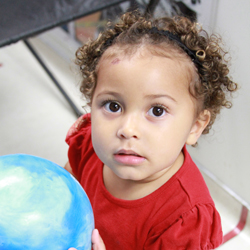About Ewing Sarcoma
Ewing sarcoma is the second most common bone cancer in children. It occurs most frequently in the long bones of the legs or arms, the pelvis, chest wall, spine and the skull, but can also begin in the soft tissues and not involve bone. This disease most often occurs in adolescents, with nearly half of cases arising between the ages of 10 and 20. Ewing sarcoma is somewhat more common in males than in females.
"The Ewing Family of Tumors" includes Ewing sarcoma, atypical Ewing sarcoma, and peripheral primitive neuroectodermal (PNET) of bone or soft tissue, and they are all treated in the same manner. A chromosomal mutation can be identified in the tumor cells of the Ewing Family of Tumors. The chromosomal mutation is not part of the genetic make-up of the person with the tumor, it is only in the tumor cells; the tumor is not inherited. The cause of the Ewing Family of Tumors is not yet known but it is believed this mutation plays an important role.
Signs and Symptoms of Ewing Sarcoma
The symptoms of depend on the bone or soft tissue site in which the cancer develops, but they usually include:
- Pain at the site of the mass, often with swelling
- Patients may have general symptoms such as loss of appetite, fever, malaise, fatigue, and weight loss
- Other symptoms are related to the specific location of the tumor. Classic symptoms include chest pain and shortness of breath in tumors that originate in the ribs, and back pain and "sciatic–like" symptoms in patients with tumors in the pelvis.
CureSearch Research
We're driving high-potential research to make a difference. Learn more about active CureSearch research projects addressing Ewing sarcoma.
More Information
Join our mailing list
Stay up to date on the latest news, research breakthroughs and stories of hope.



